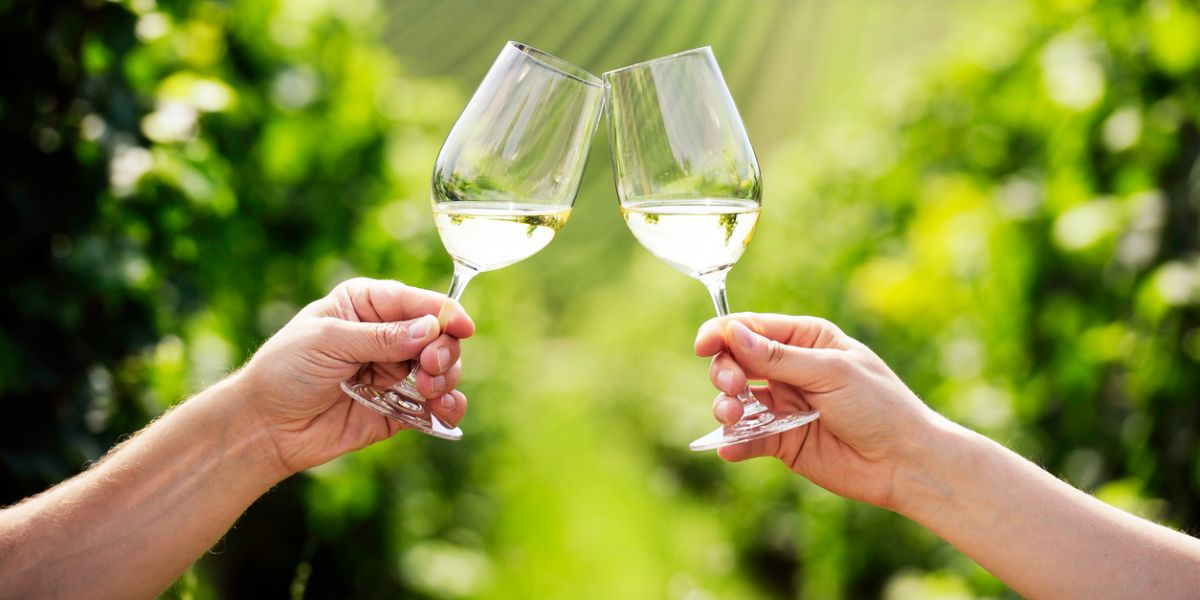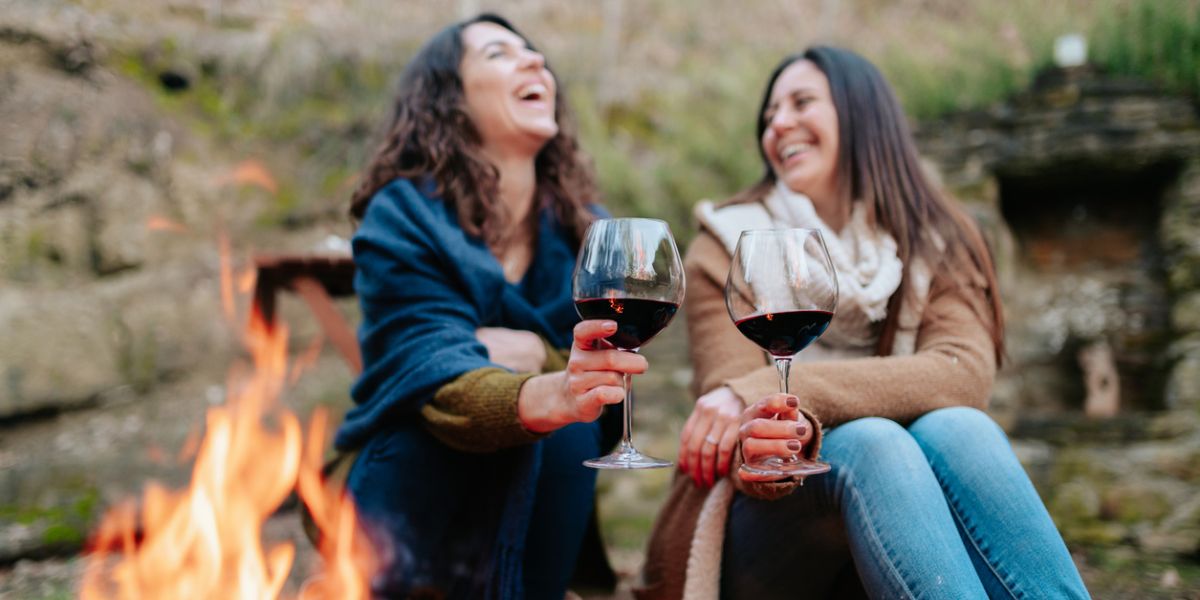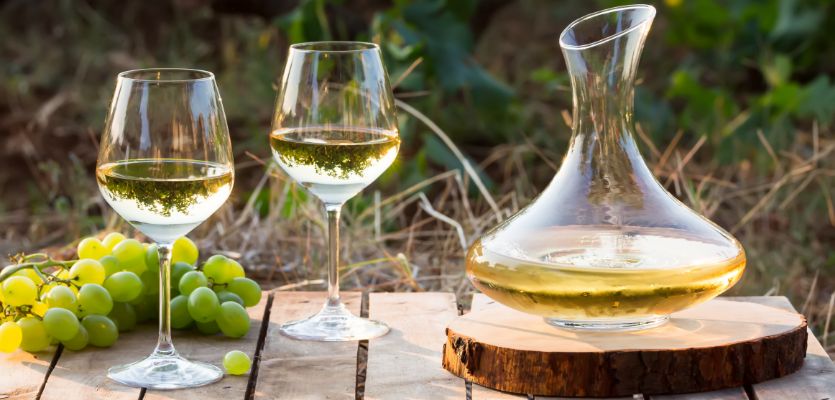Sweet Summer Sipping: Wines to Keep Cool
While most people have been waiting for warmer days to arrive, one negative to hot weather is the ability to keep cool outdoors. What many people may not know is that one way to keep cool and refreshed during summer is a nice cold glass of sweet summer wine. But just any ol’ wine will not do the trick. So, if you want to keep cool during the hot days of summer, here are some cool wine tips:
Wear light clothing
In order to maximize the cooling effects of the sweet summer wine, you also need to take some other measures, such as wearing light, bright clothes that tend to reflect light back. Wear a hat and use a shade or umbrella if you have one.
Choosing a sweet summer wine
If you want a cool wine, then go with a light wine, preferably a white wine like Riesling, Chardonnay, Pinot Grigio, or Sauvignon Blanc. These friendly light white wines have an alcohol level of less than 12.5 percent and are not too sweet but are refreshing with very pleasant flavors. Unfortunately, red wines are not as good for cooling the body as white wines unless you pick a very light red wine, such as Pinot Noir, Merlot, or Malbec.
Chill the wine
For cool wine, always chill the wine before drinking. This means placing it in the refrigerator for a couple of hours and taking it out 20 minutes before you are ready to drink it. Once the bottle is opened, make sure to have an ice bucket, as this will help maintain the freshness and coolness of the beverage. Avoid cooling the wine too much as it could result in a loss of flavor. In general, red wines should be served between 60-70 degrees, while white wines should be served between 44 to 55 degrees.
Unoaked wines
You preferably want to avoid oaked or aged wines as they tend to have high tannins and alcohol, a combination that often does not lead to cooling of the body. Hence, choose unoaked wines as they are usually young, light, and fresh.
Try sparkling wines
On a warm summer day, the one beverage that can cool you down and make you feel refreshed is sparkling wine. Sparkling wines are fizzy and bubbly because of the high levels of carbon dioxide. Sparkling wines may be made from red or white grapes and may be dry or sweet, depending on the winemaker. The great feature of sparkling wines is the pleasant icy fizziness with a broad range of fruit flavors. With just a few sips, you will develop a cooling sensation with the urge to drink more.
Finally, to keep your sweet summer wine cool, use the right buckets, and the right glassware. Stemmed glasses help keep the cool wine cooler longer because the glass surface does not come into contact with your warm hands.
Try Our Sweet Summer Wines Today!
Here are some great sweet summer wines for you to try this season:
2018 VIN DE GLACIÈRE RIESLING

This wine is made from grapes that have been frozen on the vine, which concentrates the sugars and flavors. The result is a sweet, crisp wine with notes of pear, honey, and jasmine.
2021 RAINSTORM PINOT NOIR ROSÉ

This rosé is made from Pinot Noir grapes that have been grown in the Pacific Northwest. The wine is light and refreshing with a hint of sweetness.
2016 HAHN HILL VINEYARD ICE WINE RIESLING

This ice wine is made from grapes that have been frozen on the vine, which concentrates the sugars and flavors. The result is a sweet, dessert wine with notes of apricot, peach, and honey.
2018 SPRING CREEK VINEYARD GRÜNER VELTLINER

This wine is made from Grüner Veltliner grapes that have been grown in Austria. The wine is dry and refreshing with notes of citrus, apple, and minerality.
How to Pronounce Riesling: English and German
Riesling is a floral white wine that contains all types of fruity flavors, depending on where it is produced. While the Riesling grape initially originated in the Rhine Region of Germany, other neighboring nations like France, Switzerland, and Austria also produce Riesling. A common feature of Riesling wines includes a light body, moderate to high acidity with a crisp taste, aromas of stone and citrus fruits, and a distinct gasoline smell-especially in aged wines. But how do you pronounce that name? It can be a mystery as to how to pronounce Riesling the correct way.

How to pronounce Riesling in German? While Riesling has been produced in Germany for many centuries, it was only introduced to America when immigrants arrived in the late 19th century. Despite being produced in mass quantities in Washington state, the Finger Lakes region in NY, Oregon, and Michigan, Riesling has only just started to become a popular beverage in the United States.
RIESLING: MISPRONOUNCED AND MISUNDERSTOOD
Two reasons why Riesling has been slow to catch on with the masses is because the wine is mispronounced and misunderstood. When it comes to pronunciation, there are several ways to say Riesling, including ‘Riss-ling,’ ‘Rice-ling,’ Reece-ling,’ ‘Rise-ling,’ ‘Roo-sling,’ and even ‘Reeze-leng.’ Because of the multiple pronunciation possibilities, wine consumers may shy away from ordering the beverage at restaurants for fear of sounding foolish or ignorant. The fact of the matter is that in most North American restaurants, all these pronunciations are widely understood and accepted. Plus, there is no other wine with a name similar to Riesling; hence, the consumer is unlikely to be served the wrong wine.
HOW TO PRONOUNCE RIESLING IN GERMAN
The German pronunciation of Riesling typically puts emphasis on the second vowel in the name (“e”) when two vowels are put consecutively together. Therefore, the German pronunciation equates to “reece-ling.” Some English pronunciations might have it as “Roos-ling” or even “Riz-ling.”
But even if you are shy about the way you pronounce Riesling, today, in the era of smartphones, there are software programs that can readily translate the name of the wine for you, or you can even show the waiter a picture of the Riesling wine you want.
With the pronunciations out of the way, why is Riesling such a misunderstood wine? The key reason is that a significant amount of Riesling produced in Germany is sweet, and American wine drinkers shied away from sweetened beverages. But the fact of the matter is that Riesling comes in a broad range of styles that vary from sweet to bone dry and several types in between these two extremes.
Sweet Riesling: Most of the German Riesling does have some degree of sweetness (e.g., spätlese, Auslese, Beerenauslese), but the North American varieties tend to be on the dry side.
Dry Riesling: Dry Riesling is usually produced in Austria, France, and Washington. The dry wine is prized for its quality and frequently sought after at restaurants (e.g., Kabinett)
Semi-Sweet Riesling: The semi-sweet Riesling is a well-balanced wine and is rapidly gaining popularity in the USA. Most of it is produced in Washington and the Finger Lakes regions.
Sparkling Riesling: This is a light, bubbly wine with a touch of sweetness that is refreshing and very easy to drink.
While trying to determine how to pronounce Riesling in English or how to pronounce Riesling in German, one thing is for certain: the best feature about Riesling is that it is a very versatile wine that can be paired with a wide variety of foods. Some great quality Riesling wines include the following:
2021 SWEET RIESLING
2021 J RIESLING
2021 DRY RIESLING
2018 VIN DE GLACIÈRE RIESLING
Exploring the Outdoors: Mountain and Camping Wine
Exploring the outdoors and camping is a favorite pastime for many, especially during the seasons of summer and autumn. In 2018 alone (pre-Pandemic levels), nearly 42 million Americans headed outdoors for several days of camping and hiking. Today, many of these people also want to get a better dining experience by combining it with wine consumption. The two US states with very favorable outdoor venues for exploration and camping wine that invite thousands of tourists every summer and autumn are Oregon and Washington.

Exploring the Pacific Northwest: Camping and Wine
The northwest, with its long coastline and range of mountains, offers some of the most unique landscapes, beautiful scenery, and camping experiences in the nation. For the outdoor lover, the scenic views of the coastline and sea in the Pacific Northwest are some of the best on the planet. And that is not all; the interior landscapes of both Oregon and Washington offer premier hiking trails, rugged snow-capped mountains, lush greenery, and, yes, dozens of wineries. Better still, as you explore the states, you will come across many extremely friendly locals, and will no doubt be glad to help ensure you have a great time during your visit. How to keep wine cool without a fridge may be a good question to ask them!
Whether you stay at a 5-star hotel, a cabin, or get back to nature in a tent in one of the state parks, the outdoor experiences to be garnered in the Pacific Northwest should not be missed.
The best way to explore the Pacific NW is via a road trip. In a span of several days, you will be able to taste wine, watch whales, and, while sipping coffee during a leisurely morning, get a chance to see the stunning views of the state. All you will need is the proper attire, including waterproof clothing and boots, a camera, plenty of warm clothing, and a palette that thirsts for wine because no matter where you go in Washington, wine is readily available.
Ideas for Keeping Wine Cool
How can you keep wine cool while you are exploring the rugged outdoors and camping? Ideas for how to keep wine cool without a fridge include: a cooler or an ice bucket, an insulated wine bag, a wine chiller bucket, or how about a nice, cool mountain spring (if you are so fortunate as to find one and camp near one)? Watch that your wine doesn’t get carried off, though, by either a bear or another human passing by!
Ice bucket: Of course, you’ll need ice! That means you would have to get it at a camp convenience store and/or store it in a cooler. This would entirely depend on how far you are going to camp and how long you are going to be gone.
Insulated wine bag: These can help keep already cooled wine remain cool for a few hours.
Wine chiller bucket: These can, or not, use ice to help keep wine cool. If using a frozen ice pack, it can help keep the wine cooler longer.
Cool mountain spring: If you are so fortunate, these were the earliest days of refrigeration. Pioneers used to keep milk and other foodstuffs cool by laying them under a cool mountain stream of water.
Gear Up for Your Camping Wine Adventure
For your camping wine adventure, be prepared! Take the right gear with you but do not go overboard with equipment because hiking can be a major event if you have to drag a heavy backpack. Only take essential items, like a weather-resistant tent, water, dried food, a warm blanket, sleeping bag, light, jackets to keep you warm, appropriate footwear, charcoal, fire starter, wood, phone charger, extra batteries, matches, utensils for cooking, personal care items (soap, sunscreen, toothpaste), paper sanitizers, garbage bags, first aid kit, and appropriate garments to wear during a hike, including a hat. That does sound like a lot, doesn’t it? Well, just practice common sense.
Choosing the Right Destinations
Both Oregon and Washington have plenty of wineries and campsites, but, at the same time, if you are planning a wine escapade, you need to know where to go. Many wineries do offer summer tours and wine-tasting sessions. You preferably want to be close to both destinations. Many campgrounds in Washington and Oregon are located in state and federal national parks, but you may have to book in advance, especially during summer. Plus, you want the campground to have basic amenities, like grills, showers, toilet facilities, and access to running water.
With the right preparation, the outdoors and camping wine can be an experience of a lifetime, but no matter where you go, always consider safety as your top priority.
Caution and Tips for Camping with Wine
Even though camping is fun and exciting, remember you need to check each campsite’s rules about alcohol. Many campgrounds have restrictions on alcohol/wine consumption, and, in fact, most state-run campgrounds totally block the consumption or possession of alcohol.
Some sites may allow wine or alcohol consumption in your RV or certain designated areas but do know the rules beforehand as the penalties for alcohol possession and consumption are not trivial. Even if alcohol is permitted at certain campgrounds, be respectful of others, limit the amount you drink, and always clean up your mess.
Consider Winery Tours
To avoid any legal issues with alcohol at campsites, book a tour with a winery. Not only do they offer wine-tasting events, but many also offer facilities where you can drink and dine on-site and enjoy the splendid views of the vineyards.
The Benefits of Outdoor Adventures
Finally, camping is not the only reason to spend time outdoors. The adventure can provide a significant boost for the mind and can nurture the spirit by entertaining creative thought processes. It can also provide a well-deserved time and space to enjoy some much-needed peace and quiet. Look into outdoor adventures and try some of the best camping wines for your next trip and learn measures of how to keep wine cool without a fridge for your future escape.
Click here to learn more about Pacific Rim and Company's wines.
What is a Riesling Wine? How to Tell in a Blind Taste Test
Riesling is rapidly becoming one of the most popular white wines in the U.S. Still to this day, one of the most common questions we get from new wine drinkers is, exactly what is a Riesling? It’s an honest question, because, for the longest time, many people shunned this wine because they believed that Riesling was just another sweet white wine; however, nothing could be further from the truth. What is Riesling? Riesling wine is produced in many styles that run the entire gamut from extremely sweet to bone-dry. Today, many types of Riesling wines are produced in the U.S., including in California, Washington, Oregon, and New York. U.S. Riesling’s quality rivals the best Rieslings produced in Germany, Austria, Canada, and Australia. But no matter where Riesling is produced, it is one of the more outstanding white wines and has become a favorite among sommeliers.

WHERE DOES RIESLING WINE COME FROM?
While Riesling was first produced in Germany, today many other nations also make Riesling. In general, the Riesling grape prefers cooler climates, which permit its natural acidity to become prominent. What is a Riesling wine? Overall, German Riesling is on the sweeter side; for example, Kabinett is light and has hints of sweetened ripe fruit, whereas the Trockenbeerenauslese (what a mouthful) Riesling is more obviously sweet. However, anytime you come across a German Riesling labeled Trocken, this usually indicates that the wine is dry. How can you tell if a wine is a Riesling in a blind taste test? Depending on where it is grown, Riesling will have a distinct taste of minerality.
U.S. RIESLING
In the U.S., the Pacific Northwest–notably Oregon and Washington–produce excellent quality Riesling. Besides the dramatic ways Riesling acquires minerality from the soil in which it is grown, it also offers a wide range of styles for consumers to choose from. Even the sweet Riesling has adequate acidity to negate the excess residual sugar, permitting each sip to be mouth-watering, fresh, and decadent.
What is Riesling? At a restaurant or even at home, it is difficult to find a more food-friendly wine than Riesling. The high acidity permits it to cut through fattier dishes and rich sauces; further, any sweetness means that it will pair well with any dessert or fruit. Plus, the combination of acidity and sweetness will permit the wine to pair well with spicy or aromatic foods. Compared to many other more expensive white wines that can age for any length of time, Riesling is relatively affordable and offers great quality. For example, compared to Chardonnay, Riesling is a far more impressive wine, and much easier to pair with food.
THE TASTE OF RIESLING
What is a Riesling wine? The sweet variety will often reveal the presence of a variety of fruit, whereas the dry Riesling will be fresher, more delicious, and savory. No matter which Riesling you select, a universal feature is that the beverage will have traces of citrus fruit (lime, lemon), stone fruit (nectarine, peaches, apricot), orchard fruit (pears, apples), and hints of minerals, spice (ginger, lemongrass), and sometimes honey. All these characteristics can help determine if the wine is a Riesling in a blind taste test.
HOW TO SERVE RIESLING
To enjoy Riesling, it is best served chilled. But this also depends on whether the wine is dry or sweet. In general, cooler temperatures are ideal for the sweetened versions, but for the off-dry Riesling, slightly warmer temperatures will allow the ripened fruit and sweetness to permeate the wine. If you are going to be drinking Riesling, place it in the refrigerator for about two hours and then take it out about 20 minutes before serving.
What is Riesling? A few very good quality and affordable Riesling wines are indicated below:
How Many Carbs are in a Glass of Riesling?
When people drink wine, they usually do not think about calories or carbs. There is a general assumption in the population that, compared to soft drinks, wines have very few carbs or calories but that's not the truth. The majority of wines have carbs because of the residual sugar, and the sweeter the wine, the higher the number of carbs. But what about Riesling? If you’re wondering how many carbs in Riesling is typical, read on.

Riesling is a very popular white wine. Its tastes vary from bone dry to very sweet and in between. There are several different types, and the number of carbs varies depending on the type of Riesling. Because Riesling is available in many styles, it is suited for everyone, including those who are on a low-carb diet.
How many carbs in Riesling? In general, a low-carb or dry Riesling will have 2-6 grams per liter, whereas a high-carb or sweetened Riesling contains anywhere from 9-14 grams per liter. The sweeter the Riesling, the more carbs it contains.
WHICH RIESLING SHOULD YOU SELECT?
How many carbs in a glass of Riesling? In general, if you are watching your weight and/or are on a low-carb diet, go for the dry Riesling, which usually has very little sugar that varies from 2-6 carbs or about 1.4 g per 175 ml glass of German Riesling. The critical thing for people who are trying to lose weight or prevent weight gain is to read the label on the Riesling bottle. You preferably want a Riesling that is on the dry side and states the amount of residual sugar. In general, you want residual sugar to be less than 7g per liter. Of course, this also depends on how many glasses of wine you drink on a daily basis. If you indulge in 4-6 glasses of even the dry Riesling, you’re still ingesting a good amount of calories.
HOW MANY CARBS IN RIESLING: WHICH TYPE OF RIESLING?
When looking att he original scale of German Riesling, it is important to know the different types, as the number of carbs does vary. In general, the five types of Riesling include the following:
- Kabinett (bone dry to off-dry) contains 109 calories per serving
- Spätlese (slightly sweet) contains about 110 calories per serving
- Auslese (sweeter) contains about 118 calories per serving
- Beerenauslese (very sweet) contains about 152 calories per serving
- Trockenbeerenauslese (sweetest) contains about 172 calories per serving
HOW MUCH SHOULD YOU DRINK?
In general, “moderate” drinking for men means two glasses of wine per day, and one glass of wine per day for women. Typically, Riesling made in North America will contain about 120 calories per glass, and it is recommended to have two or fewer drinks per day.
CONCLUSION
So, how many carbs in Riesling? Remember, if you are watching your weight, then besides the wine, you also need to watch what you eat. Everything in moderation. If you enjoy wine, that’s great! It is also recommended to live a healthy lifestyle and exercise regularly.
Try some of our favorite Rieslings today!